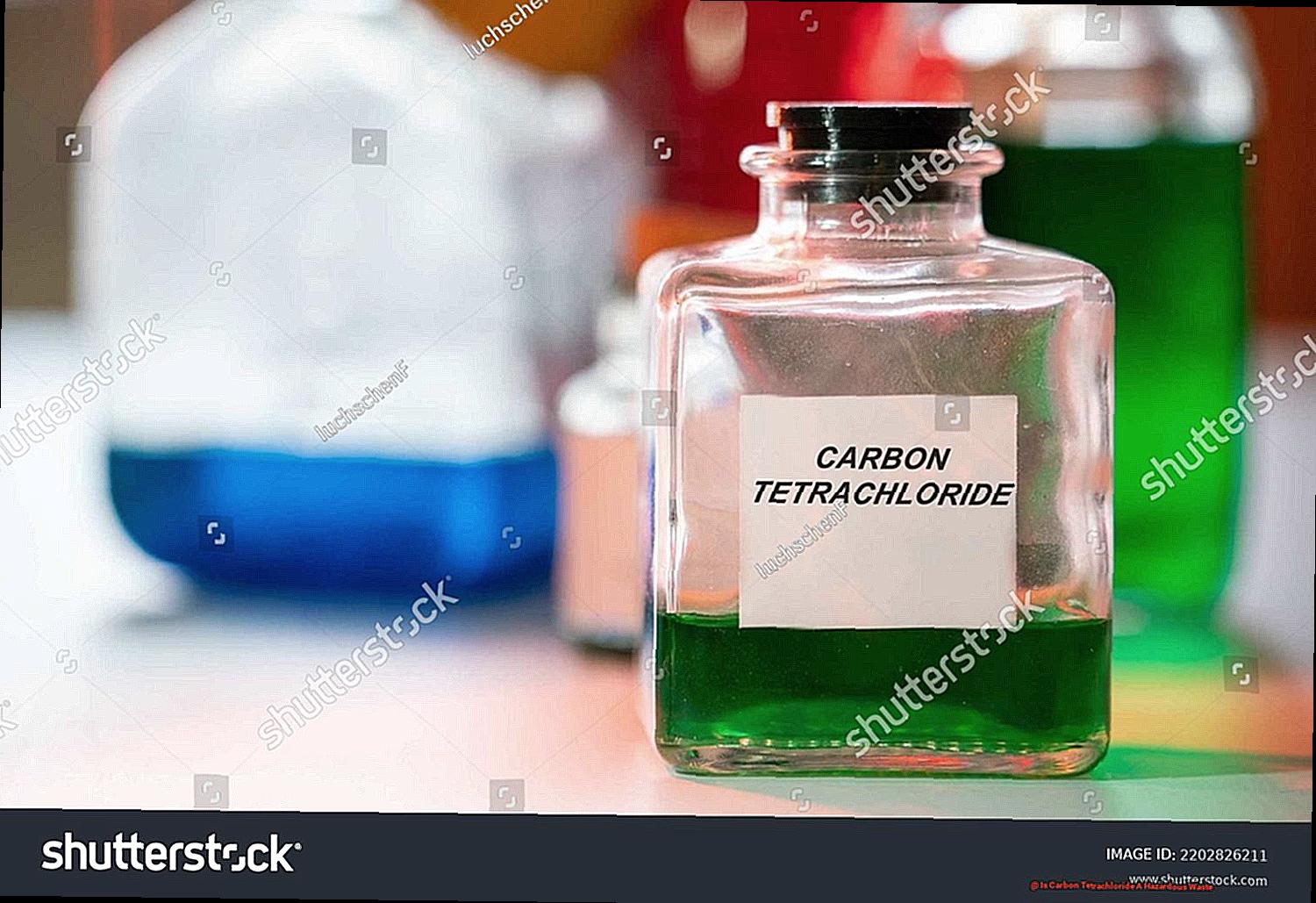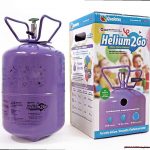Carbon tetrachloride – it’s not exactly a topic that comes up in everyday conversation.
But this unassuming liquid has been making waves in the industrial world for years. What most people don’t know is that this seemingly innocent substance can have serious consequences for both our health and the planet.
So, let’s take a closer look at why this chemical is considered a hazardous waste and why we should all be taking notice.
Is Carbon Tetrachloride A Hazardous Waste?
Contents
- 1 Is Carbon Tetrachloride A Hazardous Waste?
- 2 The history of carbon tetrachloride and its uses
- 3 The dangers of carbon tetrachloride to human health
- 4 The environmental impact of carbon tetrachloride
- 5 How to properly dispose of carbon tetrachloride
- 6 Regulations and laws surrounding carbon tetrachloride disposal
- 7 Alternatives to using carbon tetrachloride in industrial processes and products
- 8 Conclusion
Carbon tetrachloride may not be a household name, but this chemical compound has been widely used in various industries for decades. From cleaning agents to refrigerants, it has been a go-to solvent for many applications. However, despite its usefulness, carbon tetrachloride poses serious dangers to human health and the environment.
What makes carbon tetrachloride hazardous?
Carbon tetrachloride, also known as tetrachloromethane, is a colorless liquid with a sweet smell. It was commonly used as a solvent in industrial processes and consumer products until it was banned due to its ozone-depleting properties. While it is no longer produced or used in large quantities, it can still be found in some older products or as a byproduct of other chemical reactions.
So why is it considered hazardous? The answer lies in its toxic nature. Exposure to carbon tetrachloride can occur through inhalation, ingestion, or skin contact. Short-term effects of exposure can include dizziness, headaches, nausea, and irritation of the respiratory system, skin, and eyes. Long-term exposure can lead to more serious health issues such as liver damage, kidney damage, and neurological effects.

In addition to its harmful effects on human health, carbon tetrachloride also poses a threat to the environment. It is toxic to aquatic life and can persist in the environment for a long time. It is also classified as a persistent organic pollutant (POP) under the Stockholm Convention, meaning it can travel long distances through air and water and cause harm to ecosystems.
Proper disposal is crucial
Due to its hazardous nature, proper disposal of carbon tetrachloride is crucial. It should never be poured down the drain or disposed of in regular trash. Instead, it should be handled as a hazardous waste and disposed of at designated facilities that are equipped to handle toxic substances.
In the United States, the Environmental Protection Agency (EPA) has listed carbon tetrachloride as a hazardous waste under the Resource Conservation and Recovery Act (RCRA). This means that it is regulated by the EPA and must be properly managed and disposed of to prevent harm to human health and the environment. The European Union has also classified it as a hazardous waste under their Waste Framework Directive.
The history of carbon tetrachloride and its uses
From its discovery in 1864 by Belgian chemist Ernest Solvay to being a widely used chemical in various industries, carbon tetrachloride (CCl4) has a long and complex history. At one point in time, this colorless liquid was found in almost every household and workplace, with uses ranging from dry cleaning to refrigeration. However, as the harmful effects of this chemical became apparent, its use has been significantly reduced and even banned in some countries. So, how did this once popular compound turn into a banned chemical? Let’s dive into the history of carbon tetrachloride and its uses.
Origins and Use in the 19th and 20th Century
In 1864, Ernest Solvay first synthesized carbon tetrachloride by reacting chlorine gas with carbon disulfide. The chemical was initially used as a solvent for dry cleaning and degreasing due to its excellent solvency power. It was also used in fire extinguishers as it was non-flammable and could effectively displace oxygen.
In the early 20th century, carbon tetrachloride found its way into other applications such as refrigerants and fumigants. Its low boiling point made it ideal for use as a refrigerant, but it was later replaced by more efficient and less toxic chemicals. Fumigation with carbon tetrachloride was also common in agriculture to control pests, but this practice was later discontinued due to its negative impact on beneficial insects.
Peak Usage and Harmful Effects
As industrialization expanded in the mid-20th century, the production and use of carbon tetrachloride increased significantly. In the 1970s, production reached over 2 million tons per year. However, it wasn’t until the 1960s and 1970s that the harmful effects of this chemical were discovered.
Studies found that carbon tetrachloride can cause damage to the liver, kidneys, and central nervous system. It is also a known carcinogen and has been linked to various types of cancer. Furthermore, its release into the environment can have severe consequences. Carbon tetrachloride is persistent and can remain in the atmosphere for several decades, contributing to ozone depletion and climate change.
The dangers of carbon tetrachloride to human health
You may not have heard of carbon tetrachloride, but chances are you have come into contact with it at some point in your life. This chemical, once commonly found in household products, has been linked to serious health issues and is now banned in many countries. So, what exactly is carbon tetrachloride and why is it so dangerous?
Carbon tetrachloride is a chemical compound that was widely used as a solvent and refrigerant in the past. It could be found in various household products such as cleaning agents, pesticides, and fire extinguishers. However, its use has been restricted and regulated due to its harmful effects on human health.
Exposure to carbon tetrachloride can occur through inhalation, ingestion, or absorption through the skin. The effects of this chemical on human health are serious and can cause damage to various organs, including the liver, kidneys, and nervous system. Inhaling carbon tetrachloride can lead to dizziness, headaches, nausea, difficulty breathing, and even unconsciousness. Long-term exposure can result in permanent damage to these organs.
But that’s not all – studies have also found that carbon tetrachloride can increase the risk of developing cancer. The International Agency for Research on Cancer (IARC) has classified it as a possible human carcinogen. This means that exposure to this chemical may increase the risk of developing cancer in humans. Pregnant women who are exposed to carbon tetrachloride are also at risk of adverse effects on their unborn child.
So, what can you do to protect yourself and your loved ones from the dangers of carbon tetrachloride? First and foremost, make sure to read labels on household products carefully and avoid using anything that contains this chemical. If you come into contact with carbon tetrachloride, be sure to wash it off immediately and seek medical attention if necessary.
But what about products that you already have in your home that contain carbon tetrachloride? It is crucial to dispose of them properly to prevent any further exposure. Avoid pouring them down the drain or throwing them in the trash, as this can contaminate the environment. Instead, look for designated hazardous waste disposal facilities in your area to ensure safe and proper disposal.
The environmental impact of carbon tetrachloride
Carbon tetrachloride may not be a household name, but this highly toxic chemical compound has been causing harm to both human health and the environment for decades. In this article, we will explore the environmental impact of carbon tetrachloride and the importance of proper disposal to prevent further contamination.
What is Carbon Tetrachloride?
Carbon tetrachloride, also known as CCl4, is a colorless liquid with a sweet smell that was once commonly used in industrial processes such as refrigerant production, cleaning agents, and as a solvent for oils and fats. However, due to its high toxicity and potential for environmental harm, its use has been greatly reduced in recent years.
The Environmental Impact of Carbon Tetrachloride
When released into the environment, carbon tetrachloride can have devastating effects on both the ecosystem and human health. It can contaminate soil, water, and air, leading to harmful effects on plants, animals, and humans.
In soil, carbon tetrachloride can persist for several years and can leach into groundwater, posing a threat to drinking water sources. In water, it can cause harm to aquatic life and also accumulate in fish, making it a potential source of exposure for humans who consume contaminated fish.
When present in the air, carbon tetrachloride can be inhaled and cause respiratory issues. It also contributes to the depletion of the ozone layer, which protects us from harmful UV radiation.
The EPA has set a maximum contaminant level of 5 parts per billion for carbon tetrachloride in drinking water, highlighting its potential health risks. Long-term exposure to this chemical has been linked to liver damage, kidney damage, and even increased risk of cancer.
Proper Disposal Methods for Carbon Tetrachloride
Due to its hazardous nature and potential for environmental harm, proper disposal of carbon tetrachloride is crucial. Here are some safe disposal methods to consider:
- Contact your local hazardous waste facility: Many communities have designated facilities for disposing of household hazardous waste. Contact your local government for information on where to safely dispose of carbon tetrachloride.
- Participate in community collection events: These events are often organized by local governments or environmental organizations and provide a convenient way to dispose of hazardous waste.
How to properly dispose of carbon tetrachloride
Whatever the case may be, it’s crucial to dispose of it correctly to protect the environment and your health. In this blog post, we will explore the dangers of carbon tetrachloride and provide valuable insights on how to properly dispose of it.
What is Carbon Tetrachloride?
Carbon tetrachloride is a colorless liquid with a sweet odor that was widely used in various industries, such as dry cleaning, metal degreasing, and refrigerant production. However, due to its harmful effects on the ozone layer, it was banned by the Montreal Protocol in the late 20th century. While it is no longer produced or used in large quantities, it can still be found in some older products or as a byproduct of other chemical reactions.
Dangers of Carbon Tetrachloride
Carbon tetrachloride is classified as a hazardous waste by the Environmental Protection Agency (EPA) and is regulated under the Resource Conservation and Recovery Act (RCRA). Exposure to this chemical can occur through inhalation, ingestion, or skin contact.
Short-term effects of exposure include dizziness, headaches, nausea, and irritation of the respiratory system, skin, and eyes.
Long-term exposure can lead to more serious health issues such as liver damage, kidney damage, and neurological effects.
Proper Disposal Methods
The proper disposal of carbon tetrachloride is essential to prevent contamination of soil, water, and air, and to protect human health and the environment. The first step is to check with your local authorities for specific guidelines and regulations. In general, this chemical should never be poured down the drain or thrown in the trash. It should also not be incinerated or released into the air.
The most common method of disposing of carbon tetrachloride is through a licensed hazardous waste disposal facility. These facilities have the necessary equipment and expertise to safely handle and dispose of this chemical. If a disposal facility is not available, some household hazardous waste programs may accept small amounts of carbon tetrachloride for proper disposal.
It is crucial to use a sturdy container when transporting carbon tetrachloride to a disposal facility. The container should be tightly sealed and labeled as “hazardous waste.” For businesses that have large quantities of this chemical, it is recommended to hire a licensed hazardous waste transporter to ensure proper disposal.
In case of accidental spills or leaks, it is essential to follow emergency response protocols and contact trained professionals for cleanup. Do not attempt to clean up the spill yourself as it can be dangerous.
Regulations and laws surrounding carbon tetrachloride disposal
Carbon tetrachloride, also known as tetrachloromethane, was once a commonly used chemical in various industries such as refrigeration, fire extinguishers, and dry cleaning. However, its production and use have been banned since 1986 due to its harmful effects on the environment and human health.
If you happen to come across this chemical in your workplace or home, it is crucial to understand the proper regulations and laws surrounding its disposal. In this section, we will explore the details of disposing of carbon tetrachloride, including federal guidelines, exemptions for certain industries, and state-specific regulations.
The Environmental Protection Agency (EPA) classifies carbon tetrachloride as a hazardous waste under the Resource Conservation and Recovery Act (RCRA). This means that it must be handled and disposed of in accordance with strict guidelines to prevent harm to the environment and human health. Any facility or individual disposing of carbon tetrachloride must obtain proper permits from the EPA.
In addition to being a listed hazardous waste under RCRA, carbon tetrachloride is also regulated under the Clean Air Act. This is because it is a known ozone-depleting substance that can contribute to climate change. Therefore, it is crucial to properly dispose of carbon tetrachloride to prevent harmful emissions into the air.
Moreover, each state may have its own specific regulations for the disposal of hazardous waste. It is essential to research and comply with both federal and state laws to ensure proper disposal of carbon tetrachloride. Failure to do so can result in penalties and consequences for both individuals and businesses.
Alternatives to using carbon tetrachloride in industrial processes and products
As the saying goes, “out with the old, in with the new.” And when it comes to using carbon tetrachloride in industrial processes, this couldn’t be more true. This once widely used chemical has been banned and strictly regulated due to its harmful effects on both our planet and our health. But fear not, dear readers, as there are plenty of safer alternatives available for companies looking to dispose of this harmful substance.
Let’s start with refrigerants – a common use for carbon tetrachloride. Instead of using this toxic chemical, companies can switch to hydrochlorofluorocarbons (HCFCs) or hydrofluorocarbons (HFCs). These compounds have a lower potential for ozone depletion and are less toxic than carbon tetrachloride.
Next up, cleaning agents. Water-based cleaning agents are a great alternative to carbon tetrachloride-based solvents. Not only are they safer for the environment, but also for workers who handle them. Plus, they are just as effective in getting the job done.
We can’t forget about fire extinguishers – another common use for carbon tetrachloride. But fear not, there are non-flammable alternatives available such as sodium bicarbonate or potassium bicarbonate. These alternatives are just as effective in extinguishing fires and are less toxic than carbon tetrachloride.
And let’s not stop at just finding alternatives for carbon tetrachloride – let’s strive for more sustainable options altogether. Companies can look into using biodegradable materials or implementing closed-loop systems that recycle chemicals instead of disposing of them. Not only does this benefit the environment, but it also protects the health of workers and consumers.
But how can we ensure that these alternatives are just as effective and safe as carbon tetrachloride? By investing in research and development. Companies must prioritize finding safer options for their products and processes. Not only does it benefit the environment, but it also shows a commitment to the health and safety of their workers and consumers.
Conclusion
In conclusion, the evidence is clear: carbon tetrachloride poses a significant threat as a hazardous waste. Its once widespread use in various industries has resulted in serious consequences for both human health and the environment. However, through strict regulations and bans, we have taken steps towards mitigating its harmful effects.
Exposure to carbon tetrachloride can have immediate impacts such as dizziness and nausea, but the long-term effects are even more concerning. Organ damage and an increased risk of cancer are just some of the potential dangers associated with this toxic chemical.
Proper disposal of carbon tetrachloride is crucial in preventing further contamination of our soil, water, and air. Strict adherence to federal regulations under the Resource Conservation and Recovery Act (RCRA) and state-specific laws is essential. Additionally, companies must prioritize using safer alternatives in their processes and products, such as water-based cleaning agents or non-flammable fire extinguishers.
It is our responsibility to take action now to protect ourselves and our planet from the dangers of carbon tetrachloride. By investing in research for safer options and prioritizing proper handling and disposal methods, we can pave the way towards a more sustainable future.





